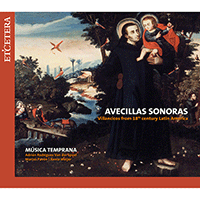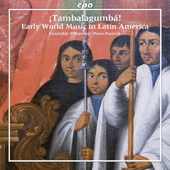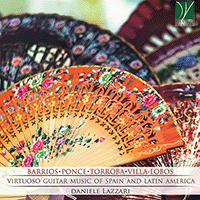Books
Experiencing Latin American Music
Experiencing Latin American Music draws on human experience as a point of departure for musical understanding. Students explore broad topics--identity, the body, religion, and more--and relate these to Latin American musics while refining their understanding of musical concepts and cultural-historical contexts. With its brisk and engaging writing, this volume covers nearly fifty genres and provides both students and instructors with online access to audio tracks and listening guides. A detailed instructor's packet contains sample quizzes, clicker questions, and creative, classroom-tested assignments designed to encourage critical thinking and spark the imagination. Remarkably flexible, this innovative textbook empowers students from a variety of disciplines to study a subject that is increasingly relevant in today's diverse society. In addition to the instructor's packet, online resources for students include: customized Spotify playlist online listening guides audio sound links to reinforce musical concepts stimulating activities for individual and group work
The Latin Beat
The Latin explosion of Marc Anthony, Ricky Martin, and the Buena Vista Social Club may look like it came out of nowhere, but the incredible variety of Latin music has been transforming the United States since the turn of the century, when Caribbean beats turned New Orleans music into jazz. In fact, we wouldn't have any of our popular music without it: Imagine pop sans the mambos of Perez Prado and Tito Puente, the garage rock of Richie Valens, or even the glitzy croon of Julio Iglesias, not to mention the psychedelia of Santana and Los Lobos and the underground cult grooves of newcomers like Bebel Gilberto. The Latin Beat outlines the musical styles of each country, then traces each form as it migrates north.
The Latin Tinge
The Tejano superstar Selena and the tango revival both in the dance clubs and on Broadway are only the most obvious symptoms of how central Latin music is to American musical life. Latino rap has brought a musical revolution, while Latin and Brazilian jazz are ever more significant on the jazz scene. With the first edition of The Latin Tinge, John Storm Roberts offered revolutionary insight into the enormous importance of Latin influences in U.S. popular music of all kinds. Now, in this revised second edition, Roberts updates the history of Latin American influences on the American music scene over the last twenty years. From the merengue wave to the great traditions of salsa and nortena music to the fusion styles of Cubop and Latin rock, Roberts provides a comprehensive review. With an update on the jazz scene and the careers of legendary musicians as well as newer bands on the circuit, the second edition of The Latin Tinge sheds new light on a rich and complex subject: the crucial contribution that Latin rhythms are making to our uniquely American idiom.

Cuban Fire
This title tells the saga of popular music of Cuban origin, and its major artists from the 1920s to today. Afro-Cuban music derives its richness from the fusion of various cultures. On the island of tobacco, rum and coffee, the marriage of sacred and secular African musical genres with Spanish and French melodies has given rise to numerous genres which have gained international fame: son, rhumba, guaracha, conga, mambo, cha-cha-cha, pachanga, nueva timba. In the US, Cubans have settled alongside other Hispanic communities. In New York, the boogaloo, salsa and Latin jazz, created by musicians such as Machito, Dizzy Gillespie and Chano Pozo emerged from contact with Puerto Ricans and African-Americans, and the rhythms of Puerto Rico and Santo Domingo were integrated into salsa and Latin jazz.
Audio
-
Avecillas Sonoras
 Villancicos from 18th Century Latin America
Villancicos from 18th Century Latin America -
Latin American Dances
 Virtuoso duo Sándor Rigó and Christina Leeb-Grill have taken Jean Françaix’s description of his own work, ‘musique pour faire plaisir’, as the motto for this programme. Dance styles and rhythms are at the heart of this repertoire, from the spectacular Brazileira with which Milhaud concludes his theatrical Scaramouche, through Piazzolla’s refinement of tradition in his Tango-Études, to the Brazilian rhythms showcased in Villa-Lobos’s Fantasia. Paquito D’Rivera adapted his Invitación al Danzón especially for this recording, providing Sándor Rigó with space to demonstrate his brilliance in improvisation.
Virtuoso duo Sándor Rigó and Christina Leeb-Grill have taken Jean Françaix’s description of his own work, ‘musique pour faire plaisir’, as the motto for this programme. Dance styles and rhythms are at the heart of this repertoire, from the spectacular Brazileira with which Milhaud concludes his theatrical Scaramouche, through Piazzolla’s refinement of tradition in his Tango-Études, to the Brazilian rhythms showcased in Villa-Lobos’s Fantasia. Paquito D’Rivera adapted his Invitación al Danzón especially for this recording, providing Sándor Rigó with space to demonstrate his brilliance in improvisation. -
TAMBALAGUMBÁ!
 Early World Music in Latin America
Early World Music in Latin America -
Virtuoso Guitar Music of Spain and Latin America
 Guitar Recital: Lazzari, Daniele - BARRIOS MANGORÉ, A. / PONCE, M.M. / MORENO TORROBA, F.
Guitar Recital: Lazzari, Daniele - BARRIOS MANGORÉ, A. / PONCE, M.M. / MORENO TORROBA, F. -
VIVA!
 Latin America Powerful Classical Music
Latin America Powerful Classical Music
-
Naxos Music Library This link opens in a new window

Naxos Music Library is the worlds largest online classical music library. Naxos offers streaming access to more than 187,000 CDs with more than 2,800,000 tracks, standard and rare repertoire.
About
‘Latin American music’ was invented through a convergence of factors. In the 1930s, intellectuals from Spain, France, Germany and the United States viewed (and often still view) our heterogeneous region as a racially unified ‘Latin’ or ‘Hispanic’ culture, and its music as expressing its uniqueness, either organically (folklore), artistically (art music) or commercially (popular music). At the same time, nationalist music activists throughout the region, such as the Brazilian Heitor Villa-Lobos, the Chilean Domingo Santa Cruz and the Mexican Carlos Chavez, facing the monumental task of organizing the musical life of these growing and urbanizing societies, engaged in institutional and musical conversations that conceptualized their individual nations as part of a larger whole. They named it differently according to the circumstances, from ‘Indo-' to ‘Ibero-’, ‘Pan-’ and ‘Latin America’. Their nationalist projects fostered musical composition, research and dissemination, especially through schools, within a regional framework. Meanwhile, commercial and broadcasting interests in the region and in the United States also adopted the view of a unified musical space to promote, say, Mexican popular songs among Argentine audiences, Cuban songs in Mexico, and Latin American songs in the United States. Finally, and crucially, a transnational network of musicologists, led by the German-Uruguayan Francisco Curt Lange, provided the vocabulary and the legitimacy to this ‘Latin American music’ for compositional, publishing, pedagogical and diplomatic uses. Then, during World War Two, the Pan American Union adopted it, and postwar composers and new audiences found it useful as well. It allowed them to see the region as a market and an area of study, as well as an identity. The category was successful and became, in the 1960s, a staple in music catalogues and programs that renewed understanding of our region, contemporarily to other fields such as Latin American social sciences, Latin American literature, Latin American studies and so on.
But the definition remained vague. If Latin America is not a distinguishable musical tradition but rather a regional project, how can we direct our ears to listen to it?
Three regionalist approaches to Latin American music have dominated since the 1960s. One is the folkloric: Latin America is considered to have unique musical ‘roots’, for example in the folk traditions collected by the Smithsonian Folkways records. A second is labeled and disseminated worldwide as ‘Latin Music’ by the music industry, from the folk and popular songs collected by Putumayo Records to the series of Caribbean pop styles, sung in Spanish and English, promoted since 2000 by the Latin Grammys. The third is a vast and polyphonic current of approaches to ‘Latin America’ understood neither as folk authenticity nor primarily as a market niche, but rather as a nomadic and aesthetically heterogeneous project.
Streaming Media
-
Latin Beat: Latino Culture in the United StatesDrawing on interviews with more than fifty major personalities from a broad cross-section of disciplines, this tour de force both analyzes and celebrates the growing influence of Latino culture in the U.S. Featured guests include artist Andrés Serrano, poet Pedro Pietri, composer Luis Dias, dancer Paloma Herrera, actor Guillermo Díaz, fashion designer Willey Esco, photographer Mariluz Gordillo, radio host Paco de Radio Mega, TV producer Gamelier de Jesus, Newsweek editor Verónica Chambers, and Washington Post journalist Jaime Manrique, who share their personal and professional experiences of being of Latino descent in America today. (Mostly Spanish with English subtitles, 120 minutes)
-
Mariachi HighIn a part of America that rarely makes headlines, there is a small town with a group of teenagers who will captivate your ears and warm your heart. MARIACHI HIGH follows a South Texas high school’s top ensemble, Mariachi Halcon, through one year of auditions and rehearsals, of heartbreak and joy, building to the state championship tournament, making a convincing case for the positive impact of in-school arts engagement on students' lives. One of the film's central themes is a connection between mariachi music for Latino youth and high achievement. As they compete and perform with musical virtuosity, these teens and the music they play will inspire, surprise, and bring you to your feet.